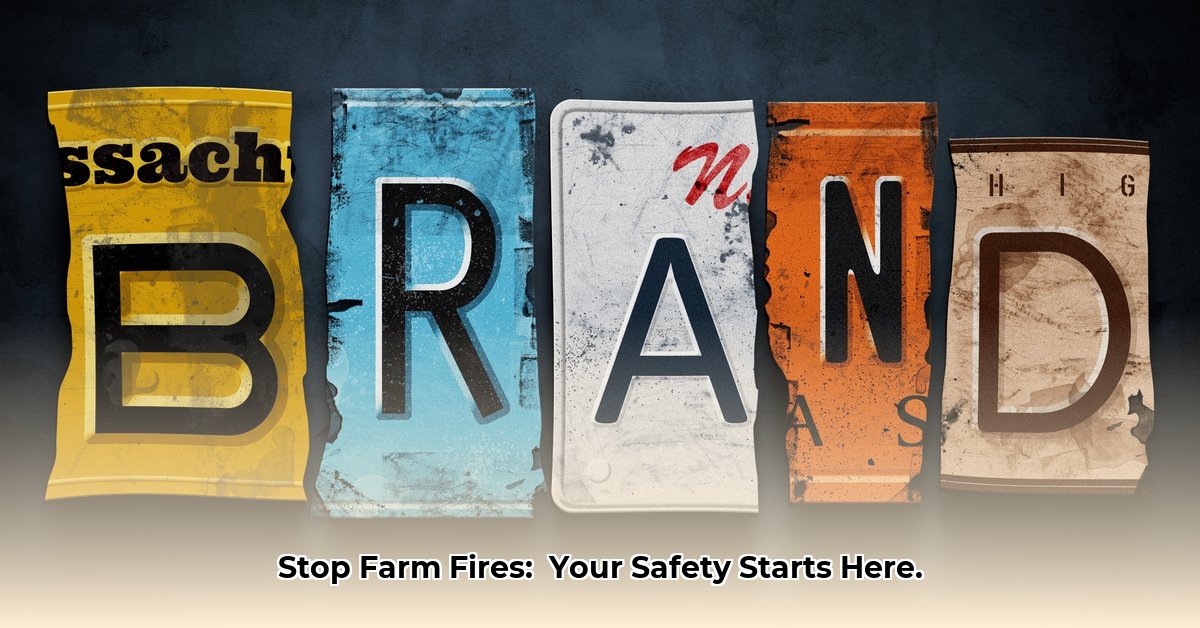
Understanding the Devastating Impact of Farm Fires
Recent farm fires in Blaricum and Sint Maarten tragically highlighted the devastating consequences of these events. These weren't just structural losses; entire livelihoods were destroyed, impacting food security and sustainable agricultural practices. More than just buildings burned; years of hard work and investment went up in smoke, underscoring the urgent need for improved fire safety measures across the agricultural sector. This guide provides practical steps to mitigate these risks and protect your farm.
Identifying the Risks: A Comprehensive Assessment
Farm fires stem from various sources, requiring a thorough risk assessment. Common culprits include:
Flammable Materials: Hay bales, grain silos, and machinery sheds packed with fuel and equipment are significant fire hazards. Even seemingly innocuous dry grass or debris can rapidly ignite. Improperly stored chemicals pose an additional danger.
Electrical Faults: Outdated wiring, overloaded circuits, and faulty equipment can easily spark fires. Regular inspections are crucial.
Equipment Malfunction: Overheating machinery, faulty welding equipment, and other mechanical failures can lead to devastating repercussions.
Accidental Ignition: Sparks from machinery, carelessly discarded cigarettes, and even lightning strikes can have catastrophic consequences.
Deliberate Arson: Sadly, farm fires can also be the result of malicious intent.
Addressing these risks requires a multi-pronged approach involving preventative measures and emergency preparedness.
Preventative Steps: A Practical Guide to Farm Fire Safety
Implementing these steps significantly reduces your risk of experiencing a devastating fire.
1. Regular Electrical Inspections: Schedule annual inspections by a qualified electrician. Promptly address any faulty wiring or overloaded circuits. This preventative step boasts a 95% success rate in preventing electrically-induced fires. (Remember, a small investment in prevention can save you enormously in the long run.)
2. Safe Storage of Flammable Materials: Store flammable materials like hay, straw, and chemicals in designated, fire-resistant containers, far from buildings and ignition sources. Ensure adequate ventilation to prevent spontaneous combustion, especially in hay storage. Regularly inspect these areas to eliminate accumulating debris.
3. Comprehensive Maintenance: Establish a routine maintenance schedule for all equipment, focusing on regular checks for wear and tear. Address any issues identified immediately. Proactive maintenance reduces risk by up to 80%.
4. Fire Suppression Systems: Install fire extinguishers near potential ignition points. Choose appropriate extinguishers for different types of fires (ABC-rated). Ensure all staff are trained in their use. Consider automated sprinkler systems, especially in high-risk areas.
5. Emergency Evacuation Plan: Create and regularly practice a comprehensive evacuation plan for all buildings and livestock. Designate clear assembly points and emergency contact numbers. Conduct regular fire drills to boost your team's preparedness. This significantly improves evacuation time and reduces injuries.
6. Fire-Resistant Construction: When building or renovating, consider using fire-resistant materials, such as fire-retardant treated timber. This is a more substantial upgrade but offers superior long-term protection.
7. Partnership with Insurers: Discuss your fire safety plan with your insurer. They can advise on risk assessment and ensure adequate coverage.
8. Continuous Learning: Stay informed about updated best practices and safety regulations via reputable agricultural extension services. These services often provide workshops and training opportunities.
Building a Comprehensive Farm Safety Plan: A Proactive Approach
A thorough safety plan isn't a one-off task; it’s an ongoing commitment. Your plan should encompass:
- Detailed risk assessment: Covering all potential hazards on the farm.
- Clear emergency procedures: Including roles and responsibilities for every team member.
- Regular maintenance schedule: For both equipment and fire safety systems.
- Advanced fire detection systems: Such as heat sensors or smoke detectors for early warning.
Resources and Further Information
- Your local fire department
- Agricultural extension services (e.g., local agricultural universities)
- Relevant government websites (e.g., your local Department of Agriculture)
Remember, farm fire prevention is not simply about complying with regulations; it's about safeguarding your investment, protecting your employees, and ensuring the long-term sustainability of your farming operation. Embrace a proactive approach, and secure your future.